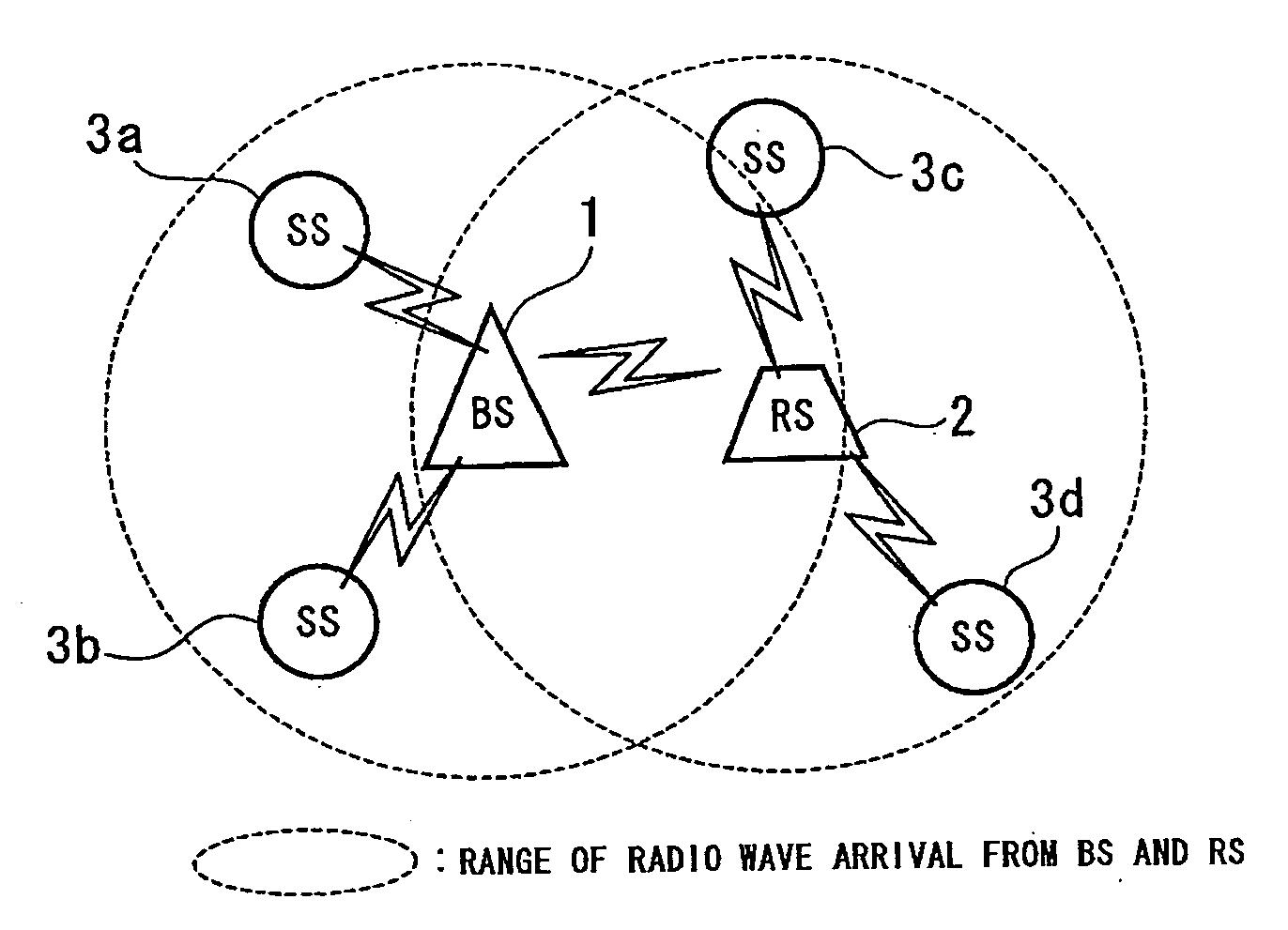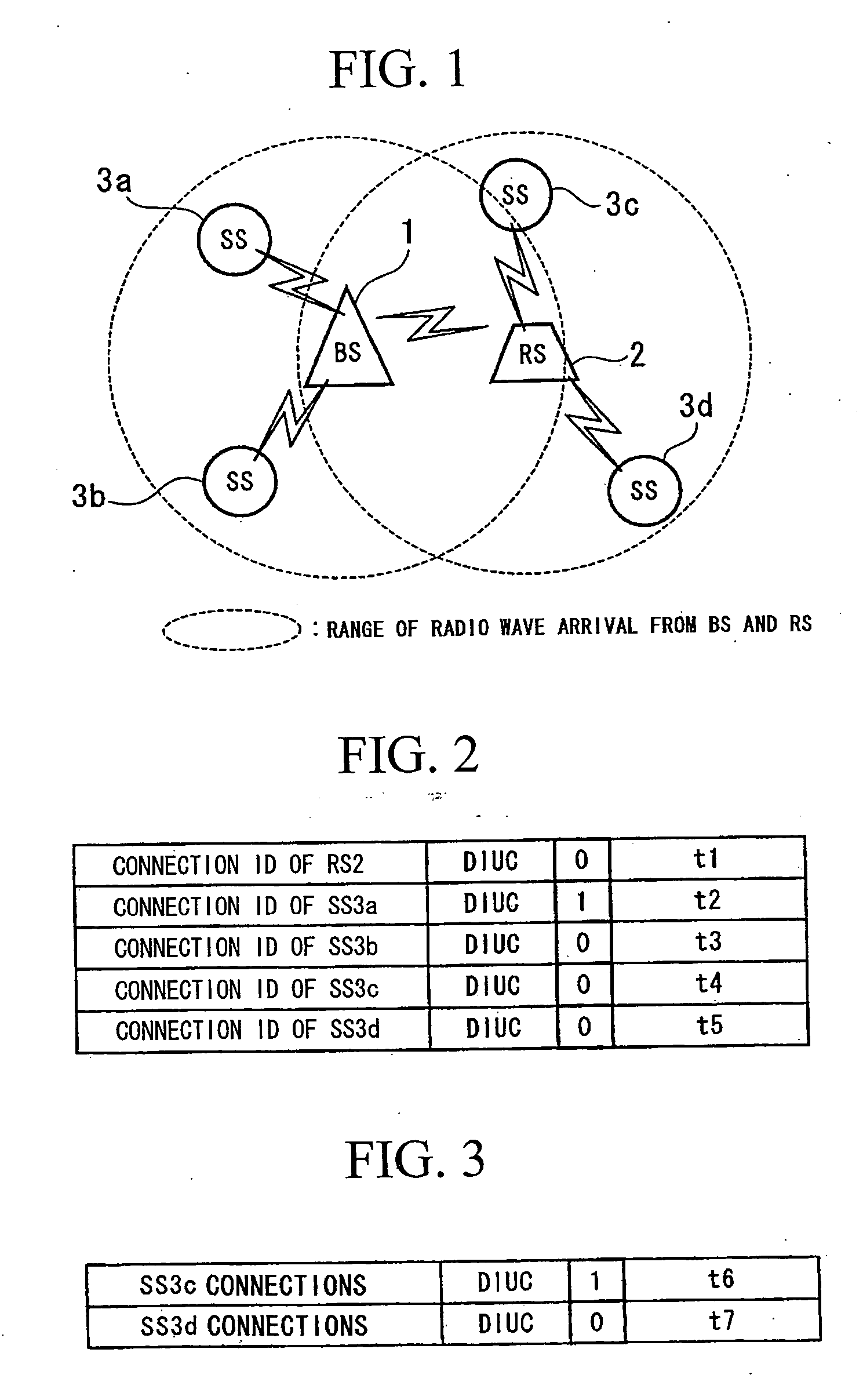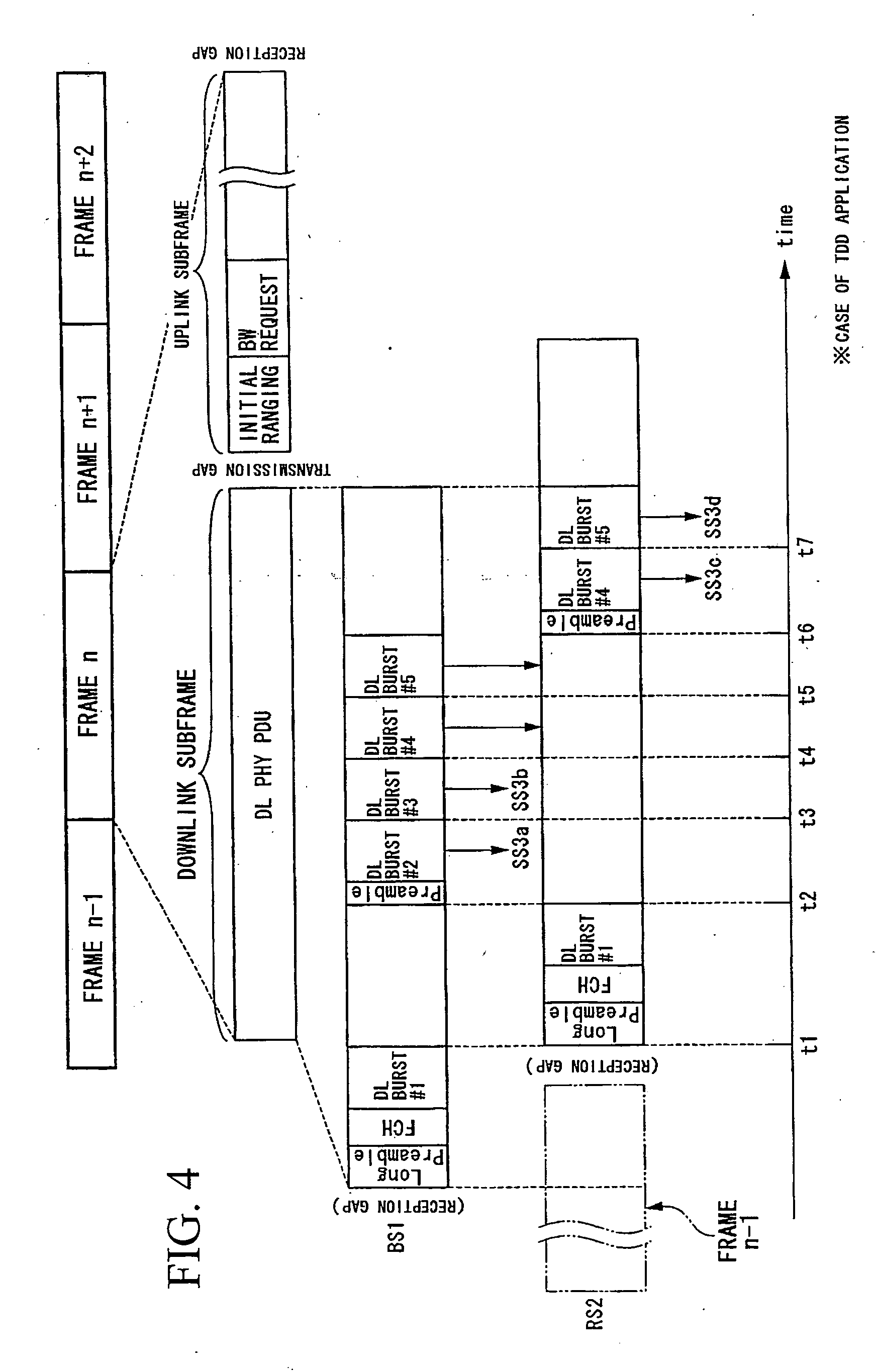Wireless communication system, relay station device and base station device
a relay station and wireless communication technology, applied in line-transmission, repeater circuits, line-transmission details, etc., can solve problems such as expansion of service, inability to communicate with bs, and dead zones
- Summary
- Abstract
- Description
- Claims
- Application Information
AI Technical Summary
Benefits of technology
Problems solved by technology
Method used
Image
Examples
first embodiment
[0041] the invention will be explained below, taking into account the above problems. FIG. 1 shows in summary the configuration of a wireless network of this embodiment. In the drawing, BS 1 is a base station device, and RS 2 is a relay station device which relays information. The BS 1 and RS 2 are fixed installations, however, whereas the BS 1 cannot easily be moved due to circumstances of the installation, the RS 2 can be made smaller in size than the BS 1, and the site of installation can be moved. SS 3a to SS 3d are portable telephone terminals, PDAs (Personal Digital Assistants), fixed-type or portable-type PCs (Personal Computers), or other wireless terminal devices. SS 3a and SS 3b are directly connected to the BS 1; SS 3c and SS 3d are connected to the BS 1 via the RS 2.
[0042] The BS 1 obtains an antenna to transmit and receive radio signals, a transmission / reception portion to perform modulation, demodulation, and other processing of signals being transmitted and received, ...
second embodiment
[0059] Next, the invention will be explained. In this embodiment, the BS 1 transmits a DL burst packet in succession to a MAP message. This embodiment alone can be implemented only when FDD is used as the duplex method. FIG. 8 shows the configuration of a wireless frame in this embodiment. Similarly to a conventional device, the BS 1 transmits the remaining DL burst packets in succession to a DL burst packet including a long preamble, FCH, and MAP message.
[0060] In this case, as shown in FIG. 8, the MAP message transmitted from the RS 2 is always fixed at the final portion of the frame. Also, in a MAP message transmitted from the RS 2, only the scheduling for the next frame and beyond is specified. That is, the Preamble Present bit is set to 1 in the DL-MAP IE corresponding to the first burst of DL burst packets continuing after the next frame. In FIG. 8, a DL burst packet transmitted from the RS 2 to the SS 3c and SS 3d is not the DL burst packet which is received immediately befor...
third embodiment
[0063] Next, the invention will be explained. In this embodiment, there is no need to fix the sizes of either of the first DL burst packets transmitted by the BS 1 and RS 2. That is, the sizes of the DL-MAP IE and UL-MAP IE transmitted by the RS 2 can be specified dynamically.
[0064] In this case, as shown in FIG. 9, the transmission position of MAP messages transmitted from the RS 2 is always set in advance to a prescribed position in wireless frames as seen from the BS 1. The BS 1 performs transmission of DL burst packets so as not to overlap with the timing of MAP messages transmitted by the RS 2. Consequently when the timing of a MAP message transmitted by the RS 2 arrives before completion of transmission of DL burst packets by the BS 1, after the RS 2 transmits the MAP message, the BS 1 restarts transmission of DL burst packets from the DL burst packet with the preamble.
[0065] That is, the BS 1 discriminates the DL burst packets transmitted before arrival of the MAP message tr...
PUM
 Login to View More
Login to View More Abstract
Description
Claims
Application Information
 Login to View More
Login to View More - R&D
- Intellectual Property
- Life Sciences
- Materials
- Tech Scout
- Unparalleled Data Quality
- Higher Quality Content
- 60% Fewer Hallucinations
Browse by: Latest US Patents, China's latest patents, Technical Efficacy Thesaurus, Application Domain, Technology Topic, Popular Technical Reports.
© 2025 PatSnap. All rights reserved.Legal|Privacy policy|Modern Slavery Act Transparency Statement|Sitemap|About US| Contact US: help@patsnap.com



